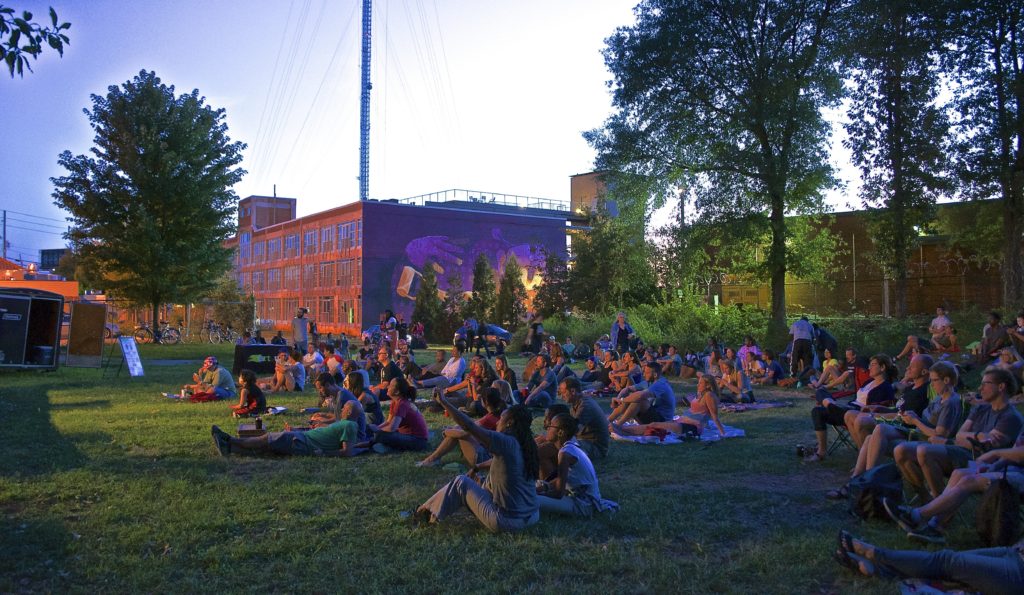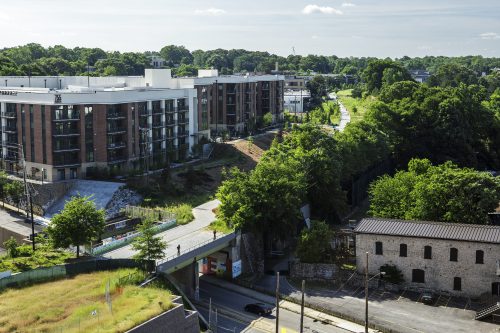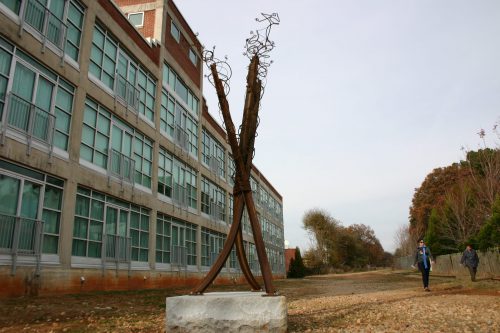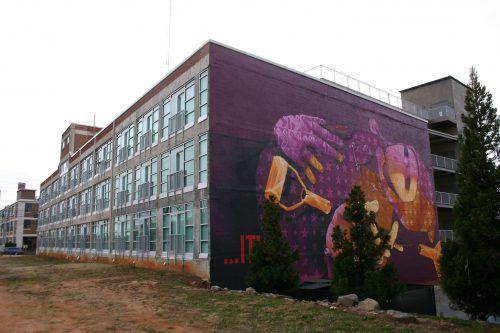The Lofts at Reynoldstown Crossing in Atlanta, Georgia is home to 28 condominium units of workforce housing in an adaptive reuse of a former motorcycle parts factory. It is located along the Atlanta BeltLine, an ambitious 25-year multimodal transportation, recreation, and housing project centered around a 22-mile historic rail corridor that circles the city. Approximately 3,000 acres of underutilized land along the corridor will become available for public and private redevelopment. Launched in 2005, the planning and development for the corridor includes goal of 5,600 affordable housing units by 2030.

Lofts at Reynoldstown Crossing, Photography by John Becker
Atlanta BeltLine, Inc. (ABI) is the public entity overseeing the project’s planning, design and implementation. Funding for the Atlanta BeltLine project comes from a combination of federal, state, local, and private sources. ABI’s role in housing development is typically reserved for predevelopment and as a partner with nonprofit and for-profit developers on specific projects. However, ABI served as the developer for the Lofts to reclaim a vacant, unfinished, upscale condominium project that had been a casualty of the Great Recession.
Reynoldstown is a historic district and one of Atlanta’s oldest African-American neighborhoods on the city’s near east side, two miles from downtown. The BeltLine bisects Reynoldstown in a north-south direction. Many of the light industrial properties in the neighborhood are now adapted for residential, retail and entertainment use.
- Atlanta BeltLine, East Side Trail in 2016, photography by Christopher T Martin
- Atlanta BeltLine, Ponce City Market Roof and Old 4th Ward Park in 2015, photography by Christopher T Martin
Lofts at Reynoldstown Crossing emerged from a failed upscale condominium development on the site of the old Triumph Lofts motorcycle parts factory. The original project was on its way towards completion in 2008 when a series of setbacks, including economic upheaval generated by the Great Recession, caused it to go unfinished and into receivership. As a result, the units sat vacant for four years, until ABI acquired the property in 2011 for $3.7 million. ABI began construction in October 2011 and completed construction in March 2012 for just under $700,000.
- Lofts at Reynoldstown Crossing
- Lofts at Reynoldstown Crossing
ABI’s goal was to provide housing to those earning under $68,000, or 100 percent of the area median income. Of the 29 condominiums, 25 were workforce-priced units, three were permanently affordable community land trust units, and the penthouse was sold at market rate.
To retain affordability, the 25 workforce units utilize a mix of equity capture, subsidy recapture, and first right of refusal. Under equity capture, if the home is resold within the first five years, a sliding percentage of gain upon resale must be repaid to the Beltline Affordable Housing Trust Fund. Under subsidy recapture, the silent second mortgage must be repaid if the home is sold within the first 15 years. Any repaid funds can be recycled to future homebuyers.
The reclaimed property retained the original development’s upscale features. The spacious two-bedroom, two-bath lofts feature granite countertops, stainless steel appliances, and floor-to-ceiling windows. Shared amenities include a fitness center, hot tub, pool, club room, and rooftop deck.

Eastside Trail, 755 North
The Lofts were offered via a one-day public sales drawing in December 2011, a strategy that generated a high level of interest in the development despite a soft real estate market. More than 2,400 people registered for the event, more than 600 visited, and more than 42 buyers were pre-qualified to participate. The one-day drawing resulted in a nearly instantaneous absorption rate: all 28 homes were placed under contract within a few hours. Ninety-three percent of the workforce units closed within eight months of marketing.





